
Frequency bands (2G, 3G, 4G) used by operators during the Mobile Network Benchmarking activity are presented in Figure 1.
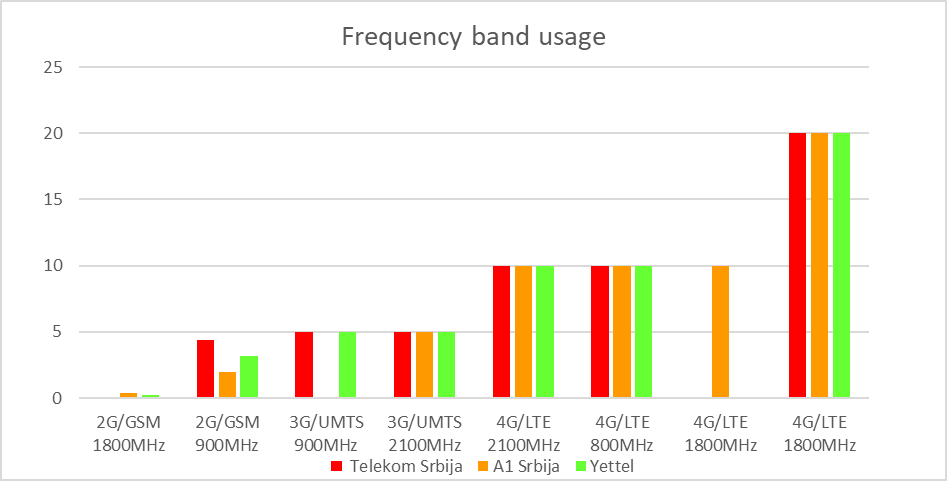
Fig. 1. Frequency bands used by operators
2G/GSM: All three operators used the 900 MHz band. The 1800 MHz band was used by A1 Srbija and to a smaller extent by Yettel.
3G/UMTS: All three operators used the 2100 MHz band, this year with a decreased total bandwidth available. The 900 MHz band was used by Telekom Srbija and Yettel.
4G/LTE: All three operators used the 800 MHz, 1800 MHz and 2100MHz bands. In Large Cities and Medium Cities all three operators used LTE-3/4CA, with up to 4CA aggregated carriers by A1 Srbija which in total resulted in 50MHz available bandwidth for this operator. In Small Cities, this year A1 Srbija showed LTE-4CA utilization as well, while Telekom Srbija and Yettel used LTE-3CA with 40 MHz on average. Yettel had least carrier aggregation areas spotted on the roads.
Carrier Aggregation (CA) usage depends on the network configuration and the amount of data sent during the test. In Large Cities and Medium Cties, A1 Srbija and Telekom Srbija reached over 98% usage of LTE CA, and Yettel over 97%. On Highways, the usage of LTE CA was highest for Telekom Srbija with 98%, A1 Srbija ranked second with 96% and Yettel was the last with 80%. On the Main Roads, the usage of LTE CA was highest for A1 Srbija with 87%, Telekom Srbija came second with 70% and Yettel was the last with 52%. On Rural Roads, the LTE CA utilization was lowest, with 75% for A1 Srbija, 57% for Telekom Srbija and 42% for Yettel.
Charts with mobile coverage statistics show the distribution of radio signal levels for 2G/GSM, 3G/UMTS and 4G/LTE technologies according to criteria defined by RATEL for the purpose of the Benchmarking campaign, are presented below in Figure 2:
| 2G/GSM signal level | 3G/UMTS signal level | 4G/LTE signal level | |
| Poor | L<-95dBm | L<-105dBm | L<-110dBm |
| Fair | -95dBm ≤ L < - 85dBm | -105dBm ≤ L < -95dBm | -110dBm ≤ L < -100dBm |
| Good | -85dBm ≤ L < -65dBm | -95dBm ≤ L < -65dBm | -100dBm ≤ L < -80dBm |
| Excellent | L ≥ -65dBm | L ≥ -65dBm | L ≥ -80dBm |
Figure 2. Radio signal levels for 2G/GSM, 3G/UMTS and 4G/LTE technologies
2G/GSM network coverage is presented in Figure 3
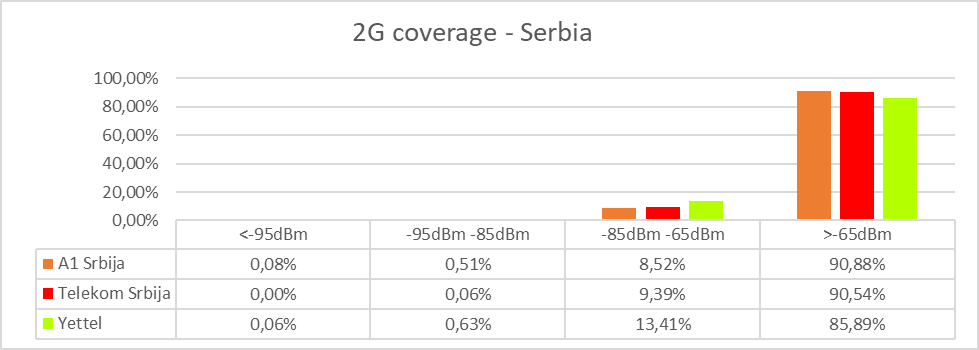
Fig. 3. 2G/GSM coverage
2G/GSM network coverage maps for all three mobile operators are shown in Figure 4.
A1 Srbija
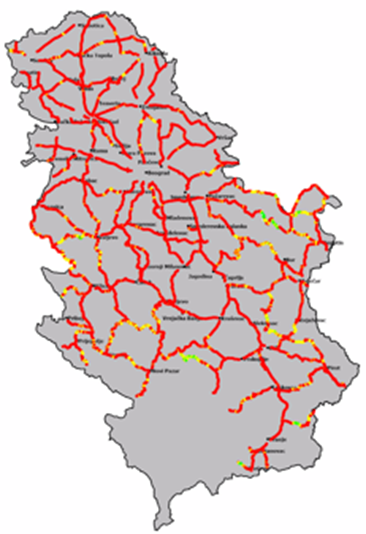
Telekom Srbija
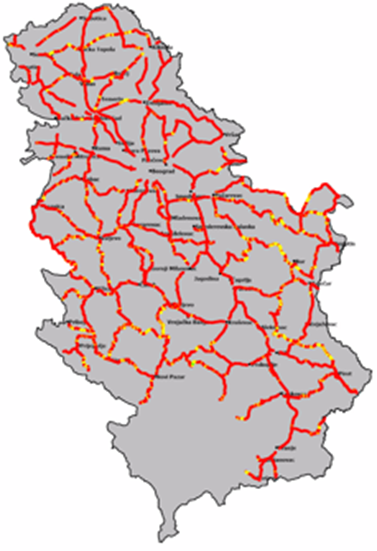
Yettel
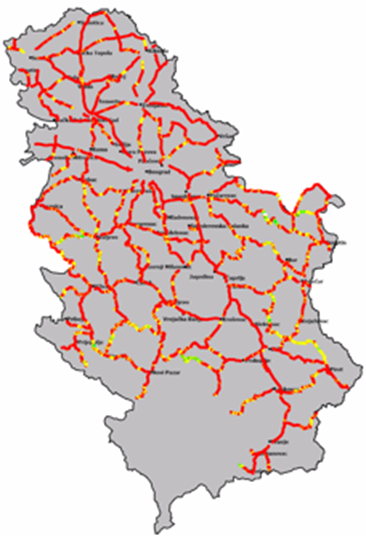
Fig. 4. 2G/GSM network coverage maps
The best coverage of 2G network was achieved by A1 Srbija and Telekom Srbija followed by Yettel which had poorer 2G coverage compared to the competitors.
3G/UMTS network coverage is presented in Figure 5.
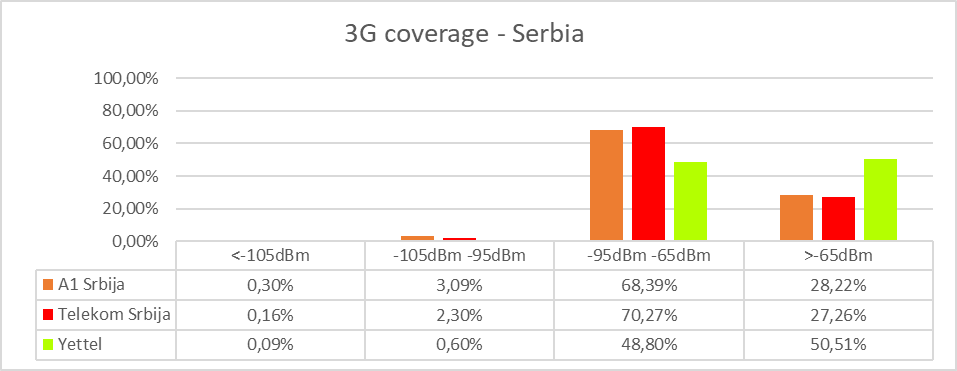
Fig. 5. 3G/UMTS coverage
3G/UMTS network coverage maps for all three mobile operators are shown in Figure 6.
A1 Srbija
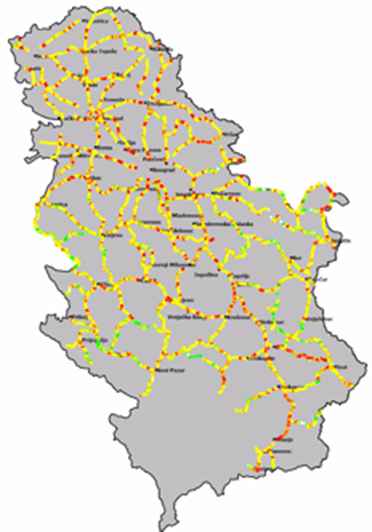
Telekom Srbija

Yettel
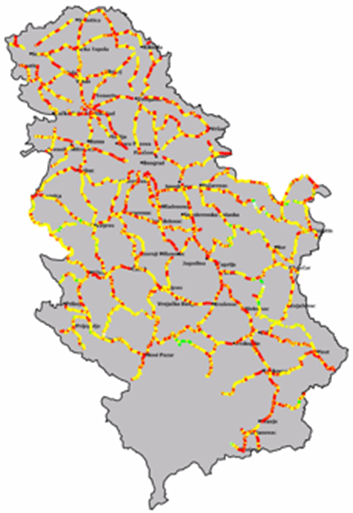
Fig.6. 3G/UMTS network coverage maps
The network with the best 3G coverage this year was again Yettel . This result was achieved due to the widest UMTS 900 MHz footprint, with a well-developed UMTS 900 MHz coverage outside of cities. Telekom Srbija and A1 Srbija were again almost equal in excellent signal category this year.
4G/LTE network coverage is presented in Figure 7.
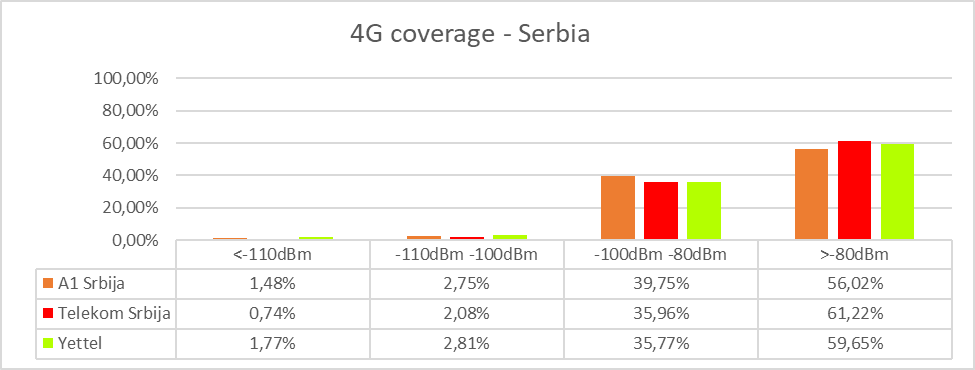
Fig. 7. 4G/LTE network coverage
4G/LTE network coverage maps for all three mobile operators are presented in Figure 8.
A1 Srbija

Telekom Srbija
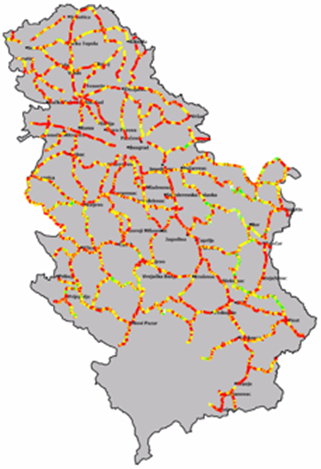
Yettel
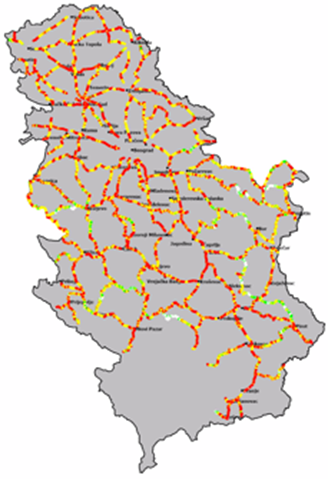
Fig. 8. 4G/LTE network coverage maps